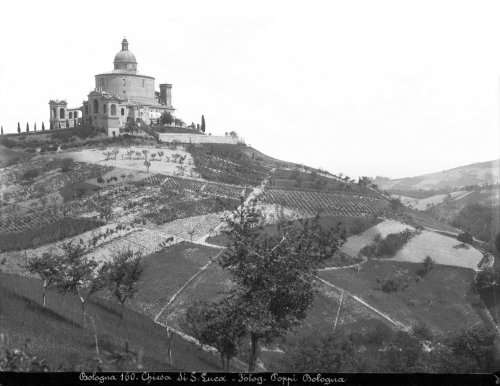THE HISTORY OF THE SANCTUARY
Since 1100 A.D. sources have referred to a hermitage located on this hill, famous for a specific hermit called Euthymius who arrived from Constantinople carrying a cedar board with an ancient Byzantine image of the Virgin painted upon it. In 1149 the hermitage passed to two sisters, Azzolina and Bice, daughters of Rampertino di Gherardi di Guezo.
The two sisters were joined by other young women who wished to spend their lives in prayer. In 1741, with the consent of the Municipality and many devoted benefactors, construction began on the Sanctuary as we see it today. Designed by Carlo Francesco Dotti, construction was nearly completed by 1757, while the façade foundations and side galleries were installed soon after. The building, circular in shape with short Greek cross arms, has a single nave and a grandiose appearance created by the large drum supporting its majestic dome. The paintings inside are from the 17th-century Bolognese school and include works by excellent artists such as Guido Reni (who painted a wonderful Madonna del Rosario found in the third chapel on the right), the Bigari, Giovanni Viani, Nicola Bertoni, and other notable local artists. The sculptures were provided by Angelo Pió and Cometti, the latter being responsible for the two beautiful statues of San Luca and San Marco on either side of the main entrance. The central altar was erected in 1815 according to a design by Venturoli, and richly decorated with marble and bronze.
Behind the presbytery, you can enter an apse via a small staircase to reach a small niche containing the precious icon. The sacred image is a pilgrimage destination, not only for devoted Bolognese who reach it by following the long portico, but also for pilgrims traveling from all over the country.
The Sanctuary is reached from the city center by following the world’s longest portico, beginning with the first arch at Porta Saragozza.



